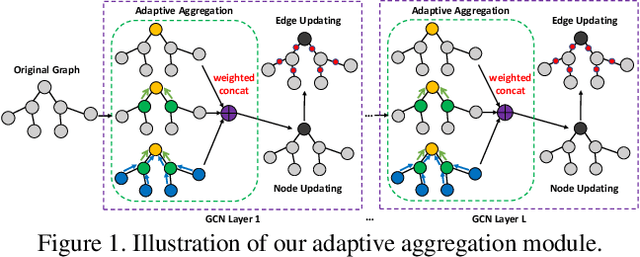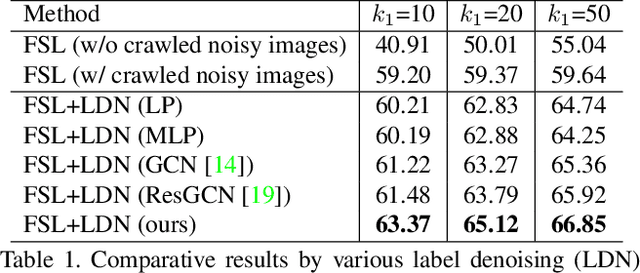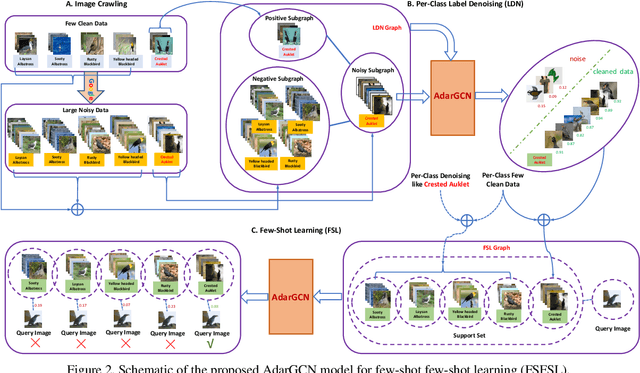Jianhong Zhang
AdarGCN: Adaptive Aggregation GCN for Few-Shot Learning
Mar 09, 2020



Abstract:Existing few-shot learning (FSL) methods assume that there exist sufficient training samples from source classes for knowledge transfer to target classes with few training samples. However, this assumption is often invalid, especially when it comes to fine-grained recognition. In this work, we define a new FSL setting termed few-shot fewshot learning (FSFSL), under which both the source and target classes have limited training samples. To overcome the source class data scarcity problem, a natural option is to crawl images from the web with class names as search keywords. However, the crawled images are inevitably corrupted by large amount of noise (irrelevant images) and thus may harm the performance. To address this problem, we propose a graph convolutional network (GCN)-based label denoising (LDN) method to remove the irrelevant images. Further, with the cleaned web images as well as the original clean training images, we propose a GCN-based FSL method. For both the LDN and FSL tasks, a novel adaptive aggregation GCN (AdarGCN) model is proposed, which differs from existing GCN models in that adaptive aggregation is performed based on a multi-head multi-level aggregation module. With AdarGCN, how much and how far information carried by each graph node is propagated in the graph structure can be determined automatically, therefore alleviating the effects of both noisy and outlying training samples. Extensive experiments show the superior performance of our AdarGCN under both the new FSFSL and the conventional FSL settings.
Recursive Visual Attention in Visual Dialog
Dec 06, 2018



Abstract:Visual dialog is a challenging vision-language task, which requires the agent to answer multi-round questions about an image. It typically needs to address two major problems: (1) How to answer visually-grounded questions, which is the core challenge in visual question answering (VQA); (2) How to infer the co-reference between questions and the dialog history. An example of visual co-reference is: pronouns (e.g., `they') in the question (e.g., `Are they on or off?') are linked with nouns (e.g., `lamps') appearing in the dialog history (e.g., `How many lamps are there?') and the object grounded in the image. In this work, to resolve the visual co-reference for visual dialog, we propose a novel attention mechanism called Recursive Visual Attention (RvA). Specifically, our dialog agent browses the dialog history until the agent has sufficient confidence in the visual co-reference resolution, and refines the visual attention recursively. The quantitative and qualitative experimental results on the large-scale VisDial v0.9 and v1.0 datasets demonstrate that the proposed RvA not only outperforms the state-of-the-art methods, but also achieves reasonable recursion and interpretable attention maps without additional annotations.
 Add to Chrome
Add to Chrome Add to Firefox
Add to Firefox Add to Edge
Add to Edge